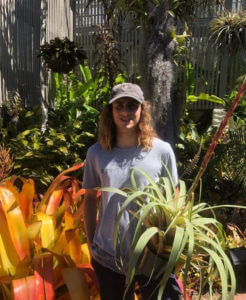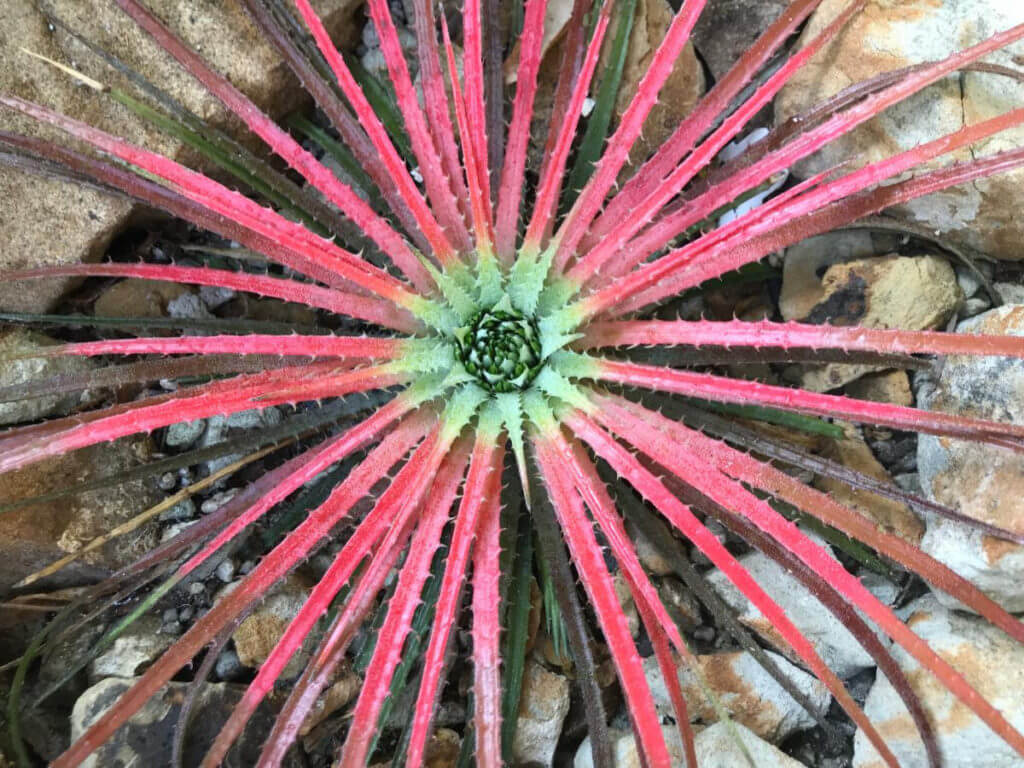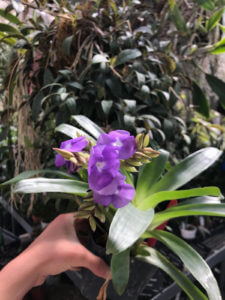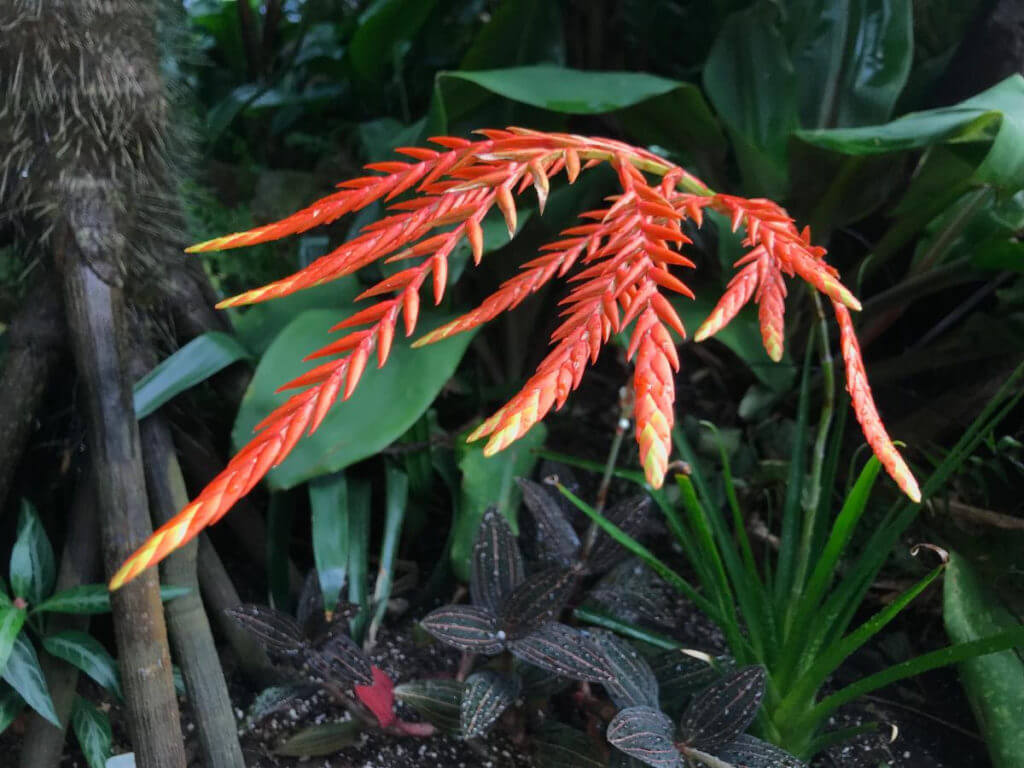The Broms

Dylan Zoller
Gardener
Bromeliads are one of the most spectacular groups in the new world tropics, occupying many of the harshest habitats across the Americas. With around 3,500 species currently accepted, the Bromeliaceae is by no means a large family when compared to Orchidaceae (~30,000+ species) or the Asteraceae (~30,000 species). However, its diversity rivals that of any tropical plant family. Originating from the Guiana Shield, a relict of land relatively undisturbed by major climatic or geologic changes for many millions of years, the family has since radiated through and speciated throughout tropical/subtropical America. A major factor in such speciation has been the uplift of the Nazca plate (Chile, Peru, Ecuador, Colombia) and the subsequent formations of the Andes mountain range. The familiar genus Tillandsia- colloquially known as “air plants”- is incredibly diverse in this region specifically, with about 700 species in the genus overall. They can be found growing epiphytically (growing on another organism- i.e. trees- non-parasitically) in buoyant perhumid equatorial cloud forests, among the rocks in high elevation páramo, and on the dunes in the driest desert on earth, the Atacama. Though this may be one (albeit very large) center for diversity in Bromeliaceae, they do extend with great numbers through Brazil, Argentina, Bolivia, Central America, and to a lesser extent Guinea in West Africa (Pitcairnia feliciana, sole member not native to the Americas) as well as the Southern United States.
Many of the plants that are familiar to the general public originate from Guatemala, Mexico, and Brazil. Partially because they lend themselves more easily to culture in our Southern California landscapes. Some popular genera are Aechmea, Billbergia, Guzmania, Neoregelia, and of course Tillandsia. These constitute the bulk of the ornamental bromeliad trade. And justifiably so, their ease to grow and stunning foliage and inflorescences offer long lasting color in the garden.
Sincoraea rafaelii

Racinaea hamaleana

Racinaea ‘Dr. Seuss’


